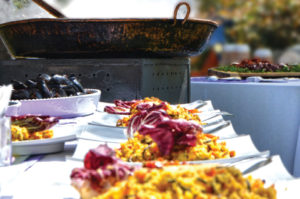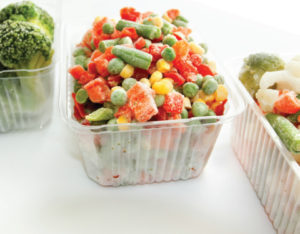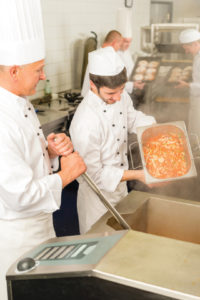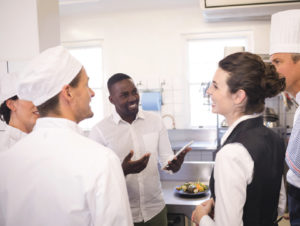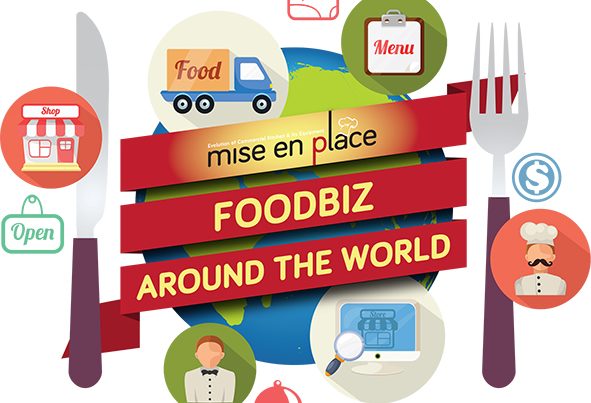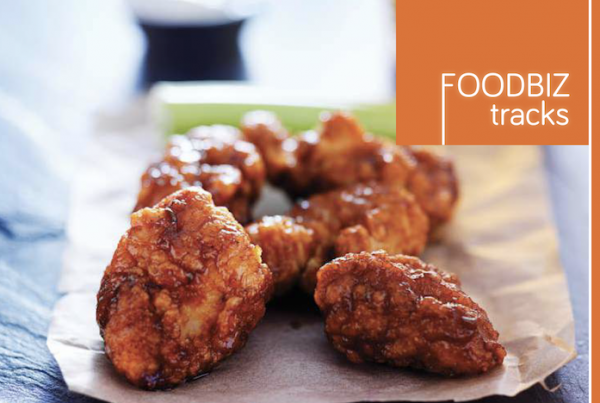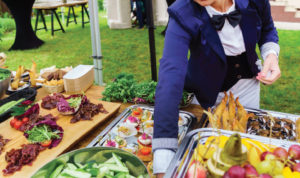 Preparing a meal to paying customers seems easy enough and it is common sense for professionals to know what customers would expect. However, sometimes it is not the case. Speaking from experience, I once went to a hotel in a highland area of Malaysia. The morning weather was chilly and naturally I was looking forward to a hot breakfast. Lo and behold, we were served cooked dishes such as rice, noodles and curries that were cold! Whether it was an oversight or not,
Preparing a meal to paying customers seems easy enough and it is common sense for professionals to know what customers would expect. However, sometimes it is not the case. Speaking from experience, I once went to a hotel in a highland area of Malaysia. The morning weather was chilly and naturally I was looking forward to a hot breakfast. Lo and behold, we were served cooked dishes such as rice, noodles and curries that were cold! Whether it was an oversight or not, 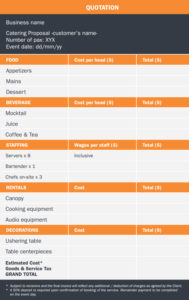 needless to say my impression of the hotel was ruined. As food is one of the most important elements in an event, how do you pull out all the stops to make the event successful for both sides?
needless to say my impression of the hotel was ruined. As food is one of the most important elements in an event, how do you pull out all the stops to make the event successful for both sides?
WHAT TO PLAN FOR
There are many clients who are too fond of giving you a vague description of what they think of having and then asking you for a quotation on the spot. It is hardly wise for caterers to give a number right off the bat especially when the number of diners cannot be confirmed and when you have not checked out the event site. Yes, the client may have decided what they want in terms of food but a lot of factors come into play before a final quotation can be given.
• Always ask for their budget first (per pax) and the kind of food they are expecting. Sometimes they might find it too expensive but they may still want that kind of menu. You can suggest replacing ingredients with more budget-friendly options without losing the menu concept.
• Survey the location to determine if you need to work with third-party vendors for things like canopy rental, equipment rental and props for a thematic setting.
• Additional aspects of the cost will include number of part-time servers, logistic charges according to distance or special menu to meet dietary requirements. Detail each item and its approximate cost before presenting the quotation.
• Usually the client has a rough number of guests attending, so it is safe to prepare a quotation within the number or add a reasonable number of headcount to cover any extras.
• Upon acceptance of the quotation, it is fair to ask for a 50% deposit. Client will still be able to make changes a few days leading up to the event. You would surely come across unreasonable requests and this is the time where you need to be firm and tactful to decline or find the most amicable way to work around it without losing too much profit margins.
THE FOOD
• Will it be self-service on the buffet line or served course by course to the guests? For the latter, the chefs must have the ability to adapt to new working spaces each time they are out and to plan a menu that allows them fairly easy execution when they are on the site.
• Number of servers are depending on service. Generally, 1 server to 25 guests for a cocktail event as they pass trays around. For buffet style, one server for every 25 to 45 diners, depending on the complexity of food items. Sitdown catering service typically require one server for every 8 to 12 guests. (www.smallbusiness.chron.com)
• Do you need a place to store the extra food or cook? This must also be arranged beforehand and allow you to determine what kind of portable equipment that you will need to pack with you. If the site has tools that you could utilise, let them know of your intent so that they are able to co-ordinate with you on that day.
• Some items on your menu may require extra preparation and cooking time. When you prepare early, you will have more time to focus on items that can only be done on the event day itself. For example, meat items keep well if you do it correctly. By adopting technologies such as cook-chill, you can cook up to 5 days ahead. Food safety regulations mandate that hot food must be brought down from 70°C to 3°C within 90 minutes as bacteria multiplies quickly between 5°C and 63°C. (Food Safety Authority of Ireland). Food needs to get past this ‘danger zone’ to be safe for consumption. If you have a few signature items that you know customers will frequently order, you can consider blast freezing them in batches where they can be kept for 1-3 months. For freezing, the temperature needs to go from 70°C to -18°C in no more than 240 minutes. (Hazard Analysis and Critical Control Points – HACCP)
• You can store these chilled or frozen foods in food-grade plastic bags. Defrost these bags overnight, bring what is enough for the event and heat them as required. Unopened bags can still be kept for a certain period of time until the next event. However, this practice of cook-chill and freeze can only be done with knowledge of food safety, the proper cooking equipment, blast freezers and a Standard Operating Procedure.
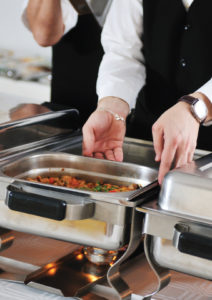 ON THE DAY
ON THE DAY
• As an outdoor caterer, every event demands you to be agile to adapt to the layout of the space. It is imperative for you to familiarise yourself with the site to be able to effectively layout the buffet line and dining areas. If you are having a ‘live’ station, decide where is the most suitable place that will not be too near to guests.
• Start organising the service area 60-90 minutes before food is due to be served. Of course, hot food should stay hot and cold food as they are. In the event of cocktails being served before the main event, ensure that your servers are walking around and offering guests the canapes and drinks.
• No caterer with a sound mind needs to be told the of a list. The list is used to make sure that nothing is left behind after the event when you are clearing up. Some of the common things in the list should include:
-Equipment 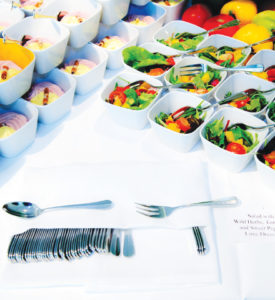 needed to finish each dish
needed to finish each dish
-Fresh garnishes for the dish
-Cutler y, serving spoons, and miscellaneous items such as napkins, condiments or sauces
-Label each box so that the staff will have no problem finding them
-Take-away bags or boxes
• One of the pet peeves of any diner at a buffet is arriving to see trays of food that look like left behinds when servers fail to notice and quickly coordinate with the kitchen to refill the food.
• Wait staff should be watchful and collect dir ty dishes and glasses so that diners are comfortable through the night.
• Leftover food must be properly packed and set aside for the client to manage amongst their guests.
THE EVENT MANAGER
This person is all-important and is fully entrusted to be the coordinator between the client, kitchen and wait
staff. He / she has to be on their feet and quick in mind all the time because your best laid plans will be subject to sudden unexpected circumstances. The manager ought to have a forward vision and an eye to anticipate possible surprises and set plans to mitigate it.
• The work begins right from the first discussion with a customer. Devise a program blueprint & cross-check it with the client. Incorporate every single change requested (no matter how minor it might be) and get the client’s confirmation. Update the relevant team as necessary and when all details are confirmed, hold a briefing for the whole team prior to the day of event.
• Calmness is the aura to project as the manager represents the company. She’s the person everyone will look to for solutions, big or small. It is never right to project a negative and non-confidence feeling to the team, guests and client.
• Nothing is too tiny to overlook. The manager must look into every aspect and in the event of spotting inconsistencies, she needs to prioritise what needs to be handled first, in order of importance.
• As a catering manager, this means that one is constantly juggling a couple of events at once, each at different levels of execution. It may be a site visit for Client A and a menu tasting for Client B, a finalisation of program flow and event setup for Client C, briefing for the team, negotiating costs with Client E; all in one day. Time management is essential.
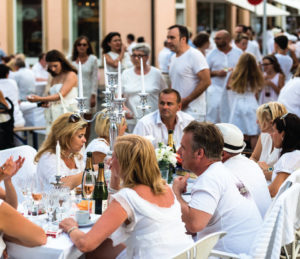 • Delegation skills. Some people lack ability to trust others to carr y out their jobs and therefore tend to drown in their to-do list while some may brief different people on specific tasks but lack to guide or follow-up on the progress. Either extremes can lead to an event not well done.
• Delegation skills. Some people lack ability to trust others to carr y out their jobs and therefore tend to drown in their to-do list while some may brief different people on specific tasks but lack to guide or follow-up on the progress. Either extremes can lead to an event not well done.
• In any event, there will be unexpected guests or those that don’t show up. To cover your expenses, you should inform the client about drop percentages in your discussion. You can calculate it by checking how much of your final count has dropped from your expected count. If the percentage is too large (typically over 20% although you can set it for yourself), you may need to charge a fee to cover the costs of extra staff & orders of supplies. The balance of the event fee will also include the drop percentage costs (if applicable). Outdoor catering is a great way to reach hundreds of people at one event, technically through a single marketing channel that is your client. Yet it is also a platform where one mistake can ruin your impression in the eyes of the hundreds; what more in today’s social media world. We speak to a few well-known catering companies around Southeast Asia to find out more on the challenges they face, how to do catering well and satisfaction derived from being a caterer.

